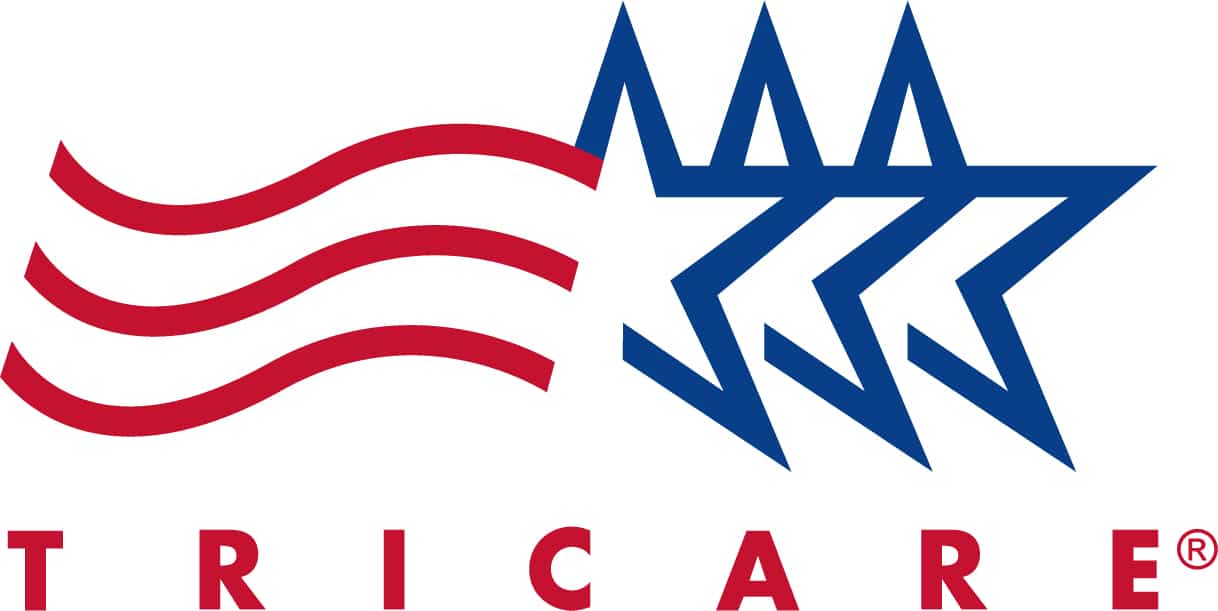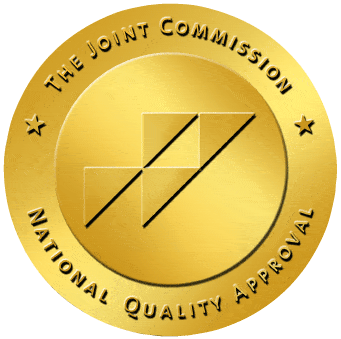Addictive Personality Traits

Addictive Personality Traits
Table of Contents
Introduction
Today, the Myers-Briggs test is one of the most popular personality tests in the world. The assessment has already been taken nearly 100 million times and is available in 30 different languages.
But can it show addictive personality traits to predict future substance abuse with a high degree of accuracy? Studies say no.
Studies strongly suggest that a person’s ability to self-regulate is at the core of developing an addiction.
What is the Myers-Briggs Type Indicator?
The Myers-Briggs Personality Type Indicator (MBTI) is an introspective self-report questionnaire that’s designed to determine an individual personality type, strengths and weaknesses, and preferences. The science behind the questionnaire is based on two different philosophies. The first philosophy arises from the studies of Carl Gustav Jung, the father of analytical psychology.
In the early 20th century, Jung created his theory of psychological types that categorized people in terms of various personality patterns. He identified four basic psychological functions:
Extraversion vs. Introversion
Sensation vs. Intuition
Thinking vs. Feeling
Judging vs. Perceiving
In the 1920s, his philosophy caught the attention of Katharine Cook Briggs, a teacher who was interested in personality typing. Working with her daughter, Isabel Briggs Myers, they created what is known as the Myers-Briggs Personality Type Indicator. They began testing their closest friends and family and worked on perfecting the test over the next twenty years.
When completing the Myers-Briggs questionnaire, people can notice acronyms like INTJ-A, ENFP-T, or ESTJ-A. These are the acronyms for the four basic psychological functions identified by Jung, plus the addition of a fifth function Assertive vs. Turbulent.
Based on the answers, an individual might belong to one of the 16 personality types. By getting insight into their personality, people can better understand their strengths and weaknesses, relationships with other people, and possible career paths.
The Five Personality Aspects
The test outlines five personality aspects that, when combined, define the personality type. After an individual finishes the test, they are presented with percentages that show under which category they fall.
The five personality aspects are:
Mind
This personality aspect shows how an individual interacts with their surroundings. There are two traits in this category, Extroversion (E) and Introversion (I).
Energy
This personality aspect shows how an individual sees the world and processes information. The two traits found here are Intuition (N) and Observation (S).
Nature
This scale focuses on how an individual makes decisions and manages their emotions. The two traits in this group are Thinking (T) and Feeling (F).
Tactics
This personality aspect reflects an individual’s approach to work, planning, and decision-making. The two traits are Judging (J) and Prospecting (P).
Identity
The Identity aspect shows how confident an individual is in their abilities and decisions. There are two types of individuals, Turbulent (-T) and Assertive (-A).
Can the MBTI Be Used to Predict an Addictive Personality?
Apart from personal use, the test has even been given in professional settings. It has been widely administered in schools, community groups, and counseling centers.
In addiction treatment, it’s given to patients in individual psychotherapy, along with other tests like the DISC Assessment, the Rorschach inkblot test, or the NEO Personality Inventory-Revised (NEO PI-R). Supposedly, the tests help psychologists to create a profile of their patients and determine the best treatment for their specific needs.
For example, those with an ENFP or ENTP personality are said to be always seeking excitement and thrills. With that being so, they’re more prone to getting addicted to amphetamines. Or, individuals with INFJ and INTJ personality are said to believe that everything in the universe is interconnected. With such outlooks, they are more likely to develop an addiction to magic mushrooms.
But how meaningful is the Myers-Briggs test? Can it show addictive personality traits and suggest an individual’s addictive behavior?
Many psychologists believe that the test is ineffective and that there’s little evidence to support the connections between MBTI types and addictive personality.
There is little evidence to support a connection between MBTI types and addictive personality.
Here are a few reasons:
The Test is Based on Untested Theories
According to Adam Grant, an organizational psychologist at the University of Pennsylvania, the test has no predictive power. There are several grounds to doubt the meaningfulness of the questionnaire. To him, the test is based on the untested theories of Carl Jung. He founded his theories based on observation, rather than on strict classifications.
The Test Uses Limited Binaries
The Myers-Briggs uses limited binaries that put an individual in only one extreme. Scores are put into categories, meaning an individual is labeled as either extrovert or introvert, assertive or turbulent. There’s little or no overlap between the two extremes. Although most people score between the two extremes, they are classified as purely introvert or extrovert. An individual may score as an introvert, but their test results may be very similar to an individual who scores as an extrovert.
Even Jung himself has admitted that “there is no such thing as a pure extrovert or a pure introvert. Such a man would be in the lunatic asylum.”
There Are Many Factors at Play
According to the American Psychological Association, the desire to use drugs stems from biological, psychological, social, and environmental factors.
An individual can be influenced by social factors like family or friends’ use of a substance, and environmental factors, for example, accessibility of a substance and low cost. Moreover, people suffering from a mental health disorder are also more prone to abuse drugs. With so many factors, even if there were addictive personality traits shown by MBTI, the predictive value would still be low.
All of the reasons outlined above are why psychologists almost entirely consider the Myers-Briggs test to be ineffective in suggesting addictive behavior.
Are There Traits That Can Predict an Addictive Personality?
Although potential substance abusers cannot be identified by a specific collection of personality traits, some traits can suggest a higher risk of developing an addiction.
There’s a distinction between addiction in men and women. The differences are believed to stem from biological and sociological differences. For example, some sociological factors include childcare responsibilities, addiction stigma, and relationship dynamics. The biological differences revolve around testosterone and estrogen production.
According to the 2013 National Survey on Drug Use and Health (NSDUH), men are almost 50% more prone to suffering from addiction. Around 10.8% of men battle addiction, compared to 5.8% of women.
It’s believed that it’s the extremes of personality and temperament that elevate the risk of addiction.
For Males
Extensive studies that looked at addiction risk discovered three major traits, all of which can be detected from an early age in children. They’re more common in men and include impulsivity, boldness, and a desire for a new experience. A male who possesses some or all of these potential addictive personality traits may find it hard to control his behavior and eventually become addicted.1
Impulsivity
Boldness
Desire for new experience
For Females
Although being bold and impulsive may sound very different from being sad and anxious, these traits are not mutually exclusive. Traits such as feeling sad, inhibited, and anxious are more typical of females.
Research has found that women use drugs differently and respond to drugs differently. Females with these potential addictive personality traits might attempt to self-medicate and, by doing so, become addicted to the drugs they’re using to cope with their negative feelings.
Sadness
Inhibition
Anxiety
Mixing Addictive Personalty Traits of Males and Females
It’s also possible for an individual, male or female, to exhibit both types of traits; they can be anxious about trying new things, but at the same time, crave new experiences. This person’s behavior may alternate between impulsive and rash to fearful and stuck in a rigid pattern.
All three pathways include the same elementary issue, and that is having difficulty with self-regulation. Many studies today strongly suggest that self-regulation plays a critical role when it comes to addiction.
One of the earliest longitudinal studies that explored drug use began in the 1970s and followed 101 children, raised in Berkeley. The psychologists who were conducting the research, Jonathan Shedler, and Jack Block, found that the brain regions that allow self-regulation require practice to develop. If those brain regions are wired unusually or if they are atypical, they may not learn to work correctly.2
The children who participated in the study, and grew to become heavy drug users were the ones that were inattentive, struggled to concentrate, stubborn, and emotionally volatile.
Having a Mental Health Disorder Might Be an Addictive Personalty Trait
A large number of people who develop substance use disorders also have an underlying mental disorder, and vice versa.
According to the National Institute of Mental Health, in 2014, 20.2 million adults in the US battled with a substance use disorder, and 7.9 million had both a substance use disorder and another mental illness.
Serious mental illnesses include major depression, anxiety, schizophrenia, and other psychiatric disorders that cause severe impairment.
Depression
It’s estimated that more than 300 million people worldwide suffer from depression. Moreover, around 16.2 million adults in the US reported having at least one major depressive episode in a given year.
People suffering from a depressive disorder are more prone to developing an addiction. They are less likely to seek medical treatment and, instead, try to self-medicate to escape negative feelings. People with depression may reach out to drugs and alcohol as an easy solution to their problems.
Research shows that around one-third of individuals battling with major depression also have an alcohol problem. Moreover, it’s been found that people suffering from depression are twice as likely to use marijuana than those who aren’t depressed.3
Although some drugs can temporarily reduce the negative feelings of mental illness, at the same time, they worsen symptoms in the long run.

Schizophrenia
Another mental health disorder widely present in people globally is schizophrenia. According to estimations, around 1% of all Americans suffer from the disorder.

Schizophrenia and addiction often co-occur. About 50% of people who have schizophrenia have a history of substance abuse.5 Those who battle with this mental health disorder may engage in substance abuse in an attempt to self-medicate or reduce feelings of anxiety and depression.
Although substance abuse cannot lead to the development of schizophrenia, it can act as a trigger. Individuals who have existing genetic risk factors for the disorder may develop an active case of schizophrenia. Substances such as marijuana, amphetamines, and cocaine can aggravate the symptoms of schizophrenia and worsen their severity.
Which Regions of the Brain Are Affected by Addiction?
Once, addiction was viewed solely as a moral failing or character flaw. Today, it’s been shown that addiction is driven by changes in the brain. This has helped reduce the stigma around addiction and paved the way for integrating treatment for substance use disorders into mainstream health care.
Three Main Regions Affected by Addiction
Well-supported scientific evidence shows that disruptions to three main areas in the brain are responsible for the development of substance use disorders.6
The basal ganglia
The extended amygdala
The prefrontal cortex
Basal Ganglia
The basal ganglia are a group of structures that can be found deep within the brain. They play a crucial role in keeping body movement coordinated and smooth. In substance abuse, these structures control the rewarding and pleasurable effects of substance abuse. They’re also responsible for why an individual forms a habit of abusing drugs.
Extended Amygdala
The extended amygdala is located beneath the basal ganglia. It’s responsible for regulating the brain’s reactions to stress. In the case of addiction, it’s involved in the feelings of anxiety, unease, and irritability that appear during substance withdrawal.
Prefrontal Cortex
The prefrontal cortex is located at the front of the brain, over the eyes. It’s responsible for complex cognitive functions, such as prioritizing tasks, managing time, making decisions, and regulating emotions. The prefrontal cortex is responsible for exerting control over abusing substances.
Stages of Addiction

Intoxication Stage
The cycle of addiction begins with the intoxication stage and the basal ganglia. When an individual uses drugs or alcohol, the brain’s reward system, or the basal ganglia, generates feelings of pleasure. The activation of the brain’s reward system may trigger changes in how an individual reacts to stimuli associated with the use of those substances. An individual using cocaine, for example, may begin to associate people and places with the substance’s rewarding effects. Over time, these stimuli can start activating the dopamine system on their own and produce urges to abuse the drug.
Withdrawal Stage
The second stage is called the withdrawal stage. This is when an individual who has been abusing a substance starts experiencing withdrawal symptoms. These withdrawal symptoms can vary, depending on the substance an individual is using and the severity of use. Withdrawal symptoms can appear with all addictive substances. An individual going through withdrawal may experience feelings of irritability, nausea, discomfort, dizziness, and other negative emotions. These feelings are believed to arise from the lowered activity in the reward circuitry of the basal ganglia and the activation of the brain’s stress systems in the extended amygdala.
Preoccupation Stage
The third and final stage is called the preoccupation stage. This is when an individual may start experiencing what is called “cravings” after a period of abstinence. In other words, they become preoccupied with using substances. In people with a severe addiction, the period of abstinence may be very short.
This stage of addiction includes the brain’s prefrontal cortex. Scientists divide the functions of the prefrontal cortex into a “go system” and a “stop system.” In people with addiction, there are disruptions in the function of both the “go” and “stop” circuits. When an individual is addicted, there’s an over-activation of the “go system,” which promotes habit-like substance seeking. At the same time, there’s an under-activation of the “stop system,” which promotes impulsive and compulsive substance seeking.
Summing Up the Addiction Cycle
To sum up, the regions in the brain that are affected by addiction are the basal ganglia, the extended amygdala, and the prefrontal cortex. It’s uncertain how long these changes can persist in the brain or how much they can be reversed even if the person stops taking the drug.
Final Word
The Myers-Briggs test has been taken by millions of people worldwide who are interested to learn more about their personalities. The test is often used by employers to test a candidate’s behavior and by psychologists to predict addictive behavior. However, research shows that there are significant flaws in the test. It’s based on untested theories of Jung, uses limited binaries, and it’s very inconsistent. According to them, the Myers-Briggs is useful for one thing: entertainment.
Other traits have been proven to suggest an addictive personality, including impulsivity in males and sadness in females. Other factors, such as a mental health disorder, can also increase the chances of an individual developing an addiction.
Scientists have discovered which regions of the brain are mostly changed by addiction. According to their findings, it’s the basal ganglia, the extended amygdala, and the prefrontal cortex. Hopefully, as more research and studies are conducted worldwide, scientists will find a more meaningful and predictive method of detecting and preventing addictive behavior.
Resources
- https://www.scientificamerican.com/article/the-addictive-personality-isn-t-what-you-think-it-is/
- https://www.ncbi.nlm.nih.gov/pubmed/2350080
- https://www.webmd.com/depression/news/20191217/people-with-depression-are-turning-to-pot-for-relief-study#1
- https://jamanetwork.com/journals/jamapsychiatry/fullarticle/482045
- https://www.ncbi.nlm.nih.gov/pmc/articles/PMC2669586/
- https://www.ncbi.nlm.nih.gov/books/NBK424849/














